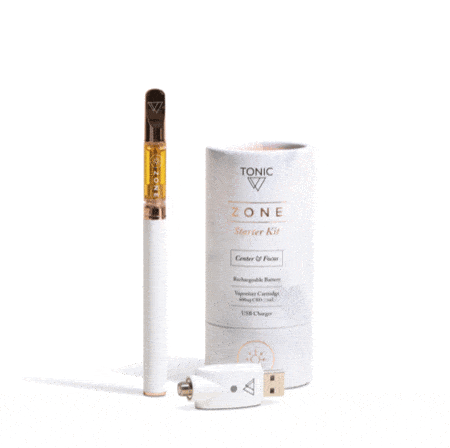Vaping, like any method of consuming a substance which brings pleasure, has always been controversial. And with the cannabis revolution well under way, weed vaping has become more popular than ever—it has helped countless medical patients and recreational users can take their medicine—and feel the effects instantly—without telltale cannabis smoke. But is it safe to vape?
In 2003, the first commercially successful electronic cigarette was created in Beijing by pharmacist, inventor, and smoker Hon Lik. It’s reported that he made the e-cig after his father, also a smoker, died of lung cancer. Flash forward to 2011 and the Obama administration bans vaping on flights. In 2016, there were reports of severe burn injuries across the country from exploding vape hardware.
In May of 2018, however, there were more than 1,888 cases of a mysterious illness and 37 deaths associated with vaping, according to the Center of Disease Control and Prevention. Symptoms of the pneumonia-like sickness include coughing, rapid loss of breath, weight loss, nausea, vomiting, and diarrhea. And yes, most of the cases involve THC.
So what do you need to know about the vaping scandal and how can you vet the cannabis products you’re vaping? We spoke to experts in the cannabis industry to find out what’s safe to vape.
How did this happen?
The first thing to know about the vaping scandal, is like most scandals, it’s largely fueled by a media frenzy. Many still see cannabis use as subversive or even sinful. When the news hit that THC cartridges could be to blame, coverage went wildfire. “The toughest part for the consumer is the media frenzy. It can feel overwhelming and confusing,” says president and chief scientist of Pure Analytics Laboratory Samantha Miller.
Miller also believes it’s important not to relegate all cannabis vaping products to the unsafe rubbish bin of history. “I also think it’s a mistake to communicate to the public that vaping isn’t safe,” she says. “The thing that I’m most concerned with that message is for many people who are using cannabis for medical reasons, vaporization is one of the fastest, and most effective delivery system for a lot of people, especially people who can’t smoke.”
“Prohibition plays a large role,” says master herbalist Dr. Lakisha Jenkins. “When you have over half of the United States with some sort of laws around cannabis, yet there is a lack of access, it causes problems. Necessity is the mother of invention. Lack of sensible regulations around both cannabis and tobacco vaping products further exacerbates the negative outcomes.”
While plenty of cannabis companies have nothing but the consumer’s best interests in mind, there are also many, many scammers in the green rush, ready to take advantage of the public’s lust for cannabis and the unregulated CBD market.
“Reputable brands don’t want to hurt our customers, but there are a lot of vape bootleggers who are trying to make a quick buck off this scam,” says Kymberly Byrnes, co-founder of TribeTokes, speaking to the immense health and safety risks associated with black market vaping oils and hardware, often purchased online by people in non-legalized states. “Consumers do not need to stop vaping in order to stay safe, they just need to stop vaping garbage vape pens.”
“Know your brands. Check the ingredients. Buy from regulated, reputable dispensaries. Ask to see the product’s certificate of analysis.”
What’s causing it?
Hemp products go largely unregulated, and with federal prohibition of marijuana, testing is trickier than it should be—especially in non-legal states. The honest answer is that we’re not sure what’s causing these illnesses. “There isn’t a clear answer based on the CDC and NCBI reports right now. There’s a variety of things that seem to be going on, suspect compounds such as Vitamin E acetate, to metal vapor, to spice cannabinoids,” Miller says.
Black market and cheaply made vapes, with pesticides or dangerous additives like propylene glycol, vegetable glycerin, Vitamin E, MCT oil, Vitamin C acetate, and more are likely to blame. So how do CBD and THC users continue to enjoy cannabis, a safe substance, under such unsafe circumstances? One option is to switch to an ingestible. “The most optimal delivery method for cannabinoids is ingesting,” Dr. Jenkins says. “If you are looking to receive the immediate benefits that are realized by vaping, you can use a sublingual or suppository.”
However, if you love the intensity and duration of vaping, no more black market or cheap vaporizers. Period. “Not all cannabis and CBD is created equally,” Miller says. “It’s become clear that gas station CBD is not a great thing.” Miller says that so far there haven’t been problems with all-natural carts, such as those which use pure plant extract, a process that’s been around for thousands of years. “It’s when we start to get outside of what’s been demonstrated in the historical record that we start to see problems.”

What’s safe to vape?
Know your brands. Check the ingredients. Buy from regulated, reputable dispensaries. Ask to see a product’s certificate of analysis (COA). “Get to know your additives,” Byrnes says. “Fillers and carriers like PG, PEG, VG, and Vitamin E acetate should not be in your vape as they turn to toxins as they combust. You should only buy from trusted brands that offer more information than they have to. If you’re buying from someone who cannot answer your questions, you should not be buying from them.”
While it’s not foolproof, Miller says you can start detecting natural products versus those made with non-ingestible-when-burned additives by looking at the cannabinoid level. “Generally speaking, you should be seeing something over 60 percent if it doesn’t have a significant amount of additives. You see something like 35 percent cannabinoids, that’s a really low number for cannabis oil,” she says. You should also pay a standard dispensary price for your vape. Low budget means low quality. “If you’re not complaining about the cost of your vape cart, it's probably a fake,” Byrnes says.
Brands that charge medical-grade price test all of their products to ensure everything is safe. “Multi-stage testing for heavy metals is an extra step that many clean vape-obsessed brands will take. Beyond just testing their hardware for heavy metal residue, they’ll also test the oil after being confined in the hardware for the typical shelf life and consumer use period to make sure the components of the hardware do not seep into the cartridge over an extended period of time,” Byrnes says.
As a customer, you have a right to get confirmation from a brand or dispensary that these best practices are kept to. If a customer service representative can’t answer questions relating to testing and ingredients, go elsewhere.

What’s the solution?
Miller says that she hopes the vaping illness will prompt more safety regulations and testing on cannabis and CBD products. “One of the problems that we’re dealing with is that, for example in California, there isn’t even a requirement for a full list of ingredients,” Miller says.
In addition to a list of ingredients on each product, she also encourages we develop a list of banned ingredients responsible for health issues and deaths. “We could provide more direct guidance and exclusions to allow manufacturers who have the best of intentions to make a safe product,” she says.
For such regulation to happen across the country, to ensure we all have access to safe and quality vapes, we must legalize cannabis at the federal level. Legalization means access, more research, and regulations to keep dangerous materials off the market. “End prohibition. It’s that simple,” Dr. Jenkins says.
“Prohibition gives bad actors a channel to peddle inferior products. Enact sensible regulations and treat phytocannabinoids as the nutritional supplement that nature intended them to be, and we will see a shift in the quality of products that are available to consumers.”
“If you’re not complaining about the cost of your vape cart, it's probably a fake.”






